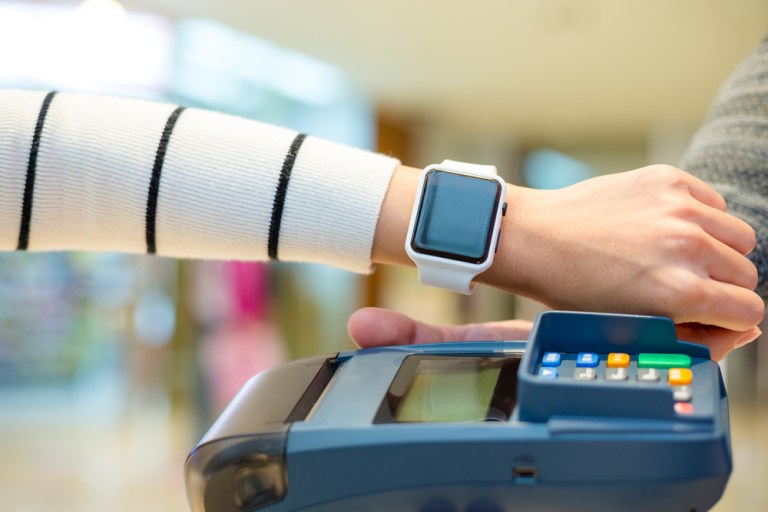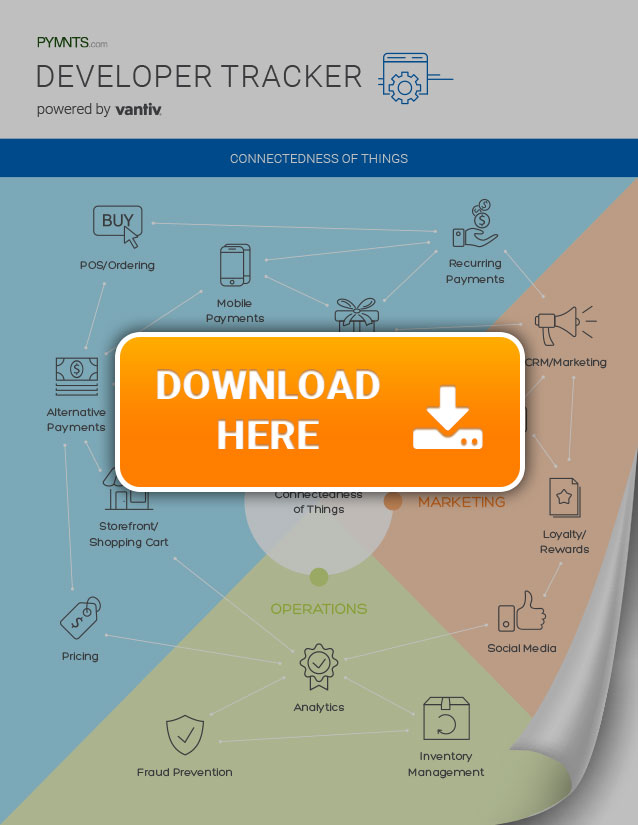The Next (Wearable) Frontier of POS

Most wearables are consumer devices that keep tabs on steps climbed or emails or texts received. LibriSpark CEO Jeremy Feldman tells PYMNTS in this month’s Developer Tracker™ that the technology is now available to help merchants reinvent the POS – by wearing it. He’s not kidding either.
It’s easy to think about commerce and wearable technology and immediately picture consumers swiping their connected devices – be it bracelets, smartwatches, rings, wristbands, etc. – in order to enable payments.
But what if the merchants instead had the power of wearables on their side?
Thus enabling a business to bring the point of sale right to the consumer in a variety of merchant situations.
That’s the idea behind an up and coming wearable POS solution from stealth startup LibriSpark, which CEO Jeremy Feldman told PYMNTS is designed to bring speed and mobility to both the customer and payment experiences.
The solution will include both hardware and software to extend the capability and efficiency of retailers through the use of wearable technology. The POS wearable device will accept a variety of payment methods – NFC, magstripe cards, QR Code, etc. – and allow a consumer to make a payment with a merchant on the spot.
The “line busting” solution eliminates the friction that can come with a retailer only having a single point where all transactions take place.
As Feldman explained, traditionally the POS is intended to drive customers to a single point, increasingly the likelihood that congestion will occur when it gets busy.
“Busy times are a critical time for a business. The more efficiently the POS can work, the better the user experience while minimizing the loss in sales due to waiting,” he said.
The software aspect of the solution will utilize real-time data analytics to not only provide meaningful insights to LibriSpark’s customers, but also gather certain data metrics from the device to help fight fraud.
Feldman said that while card-present fraud is an issue impacting merchants, the larger threat comes from fraudsters that tap into a payments API and pretend to be a legitimate hardware device in order to initiate unauthorized transactions. To combat this particular (and quite silent) threat, LibriSpark is focusing on different strategies that will assist in authenticating when an authentic hardware device is being used and when it’s not.
Initially, the wearable POS solution will be targeted at the restaurant and bar industry, as well as merchants who need to accept payments while making deliveries. In these scenarios, the ability to provide the consumer with the opportunity to make a payment on the spot may serve as a true time saver.
Feldman said the door for LibriSpark is open to many different use cases – from retailers and farmers markets, to business professionals out in the field, cab drivers, and even car dealerships – places where a merchant doesn’t need to rely on a single-point checkout.
Although the idea of a POS terminal device that can go anywhere a sales associate or merchant employee takes it sounds ideal, Feldman warned it’s not going to be the right move for all merchants.
“For a lot of businesses the dedicated tabletop solution will remain necessary — it really all depends on the spatial integration of the business,” he said.
Meaning that if your business is designed for that single POS – take your local coffee shop – a wearable might speed up the single line, but Feldman pointed out that because consumers would still have to remain at that single point to pick up their order, the true benefit of the solution wouldn’t be realized in that scenario.
“I don’t see it having that big of an impact with businesses maintaining the traditional spatial or physical configuration,” Feldman explained, adding that he does expect merchants will soon realize the value is adopting new designs for the spatial aspect of their business.
And that’s a move that could quickly enable new sales tactics to improve efficiency.
From a sales standpoint, Feldman noted, if a great sales associate is developing relationships with the customer and can close the sale in the moment right after they’ve rolled off their sales pitch, that’s empowering a new sales edge.
Feldman said that in the time he spent researching and talking with merchants about how they truly felt about their POS solutions, it became clear that with all the advancing technologies available and new security requirements, there’s still something missing from the POS space.
The takeaway from Feldman’s inquiry? Though there’s an overwhelming number of options on the market, many merchants just aren’t completely happy with the POS they have.
“Retailers are looking for POS solutions that will provide a better experience to their customers and that can also provide better insights and analytics, as well as functional ways to improve sales,” Feldman said.
Even though many of the details surrounding LibriSpark remain under wraps, the stealth startup is certainly aimed at using wearables and IoT to fill the widening gap in a crowded POS market.
To download the May edition of the PYMNTS.com Developer Tracker™, powered by Vantiv, click the button below.
About The Tracker
The PYMNTS.com Developer Tracker™, powered by Vantiv, provides the payments ecosystem with a view into how software developers are using new technologies to create innovative business opportunities and enable merchants to optimize the ways in which they engage with shoppers today. The developer community within the tracker is separated into three categories: Shopping and Payments, Operations, and Marketing.
